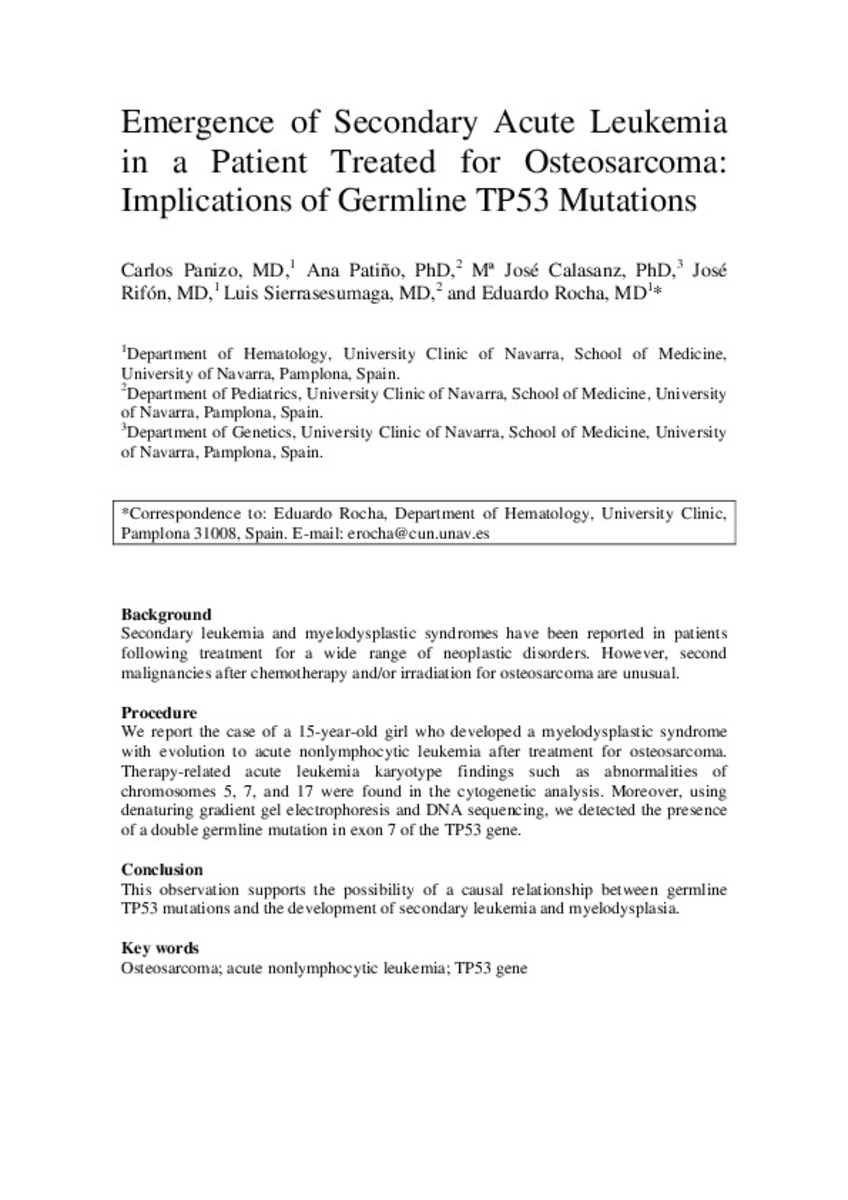Emergence of Secondary Acute Leukemia in a Patient Treated for Osteosarcoma: Implications of Germline TP53 Mutations
Keywords:
Femoral Neoplasms/drug therapy/radiotherapy/surgery
Genes, Tumor Suppressor/drug effects/genetics
Leukemia, Myeloid, Acute/chemically induced/genetics
Publisher:
Wiley-Blackwell
Citation:
Panizo C, Patiño A, Calasanz MJ, Rifón J, Sierrasesumaga L, Rocha E. Emergence of Secondary Acute Leukemia in a Patient Treated for Osteosarcoma: Implications of Germline TP53 Mutations. Med Pediatr Oncol. 1998 Mar;30(3):165-9.
Statistics and impact
0 citas en

0 citas en

Items in Dadun are protected by copyright, with all rights reserved, unless otherwise indicated.









